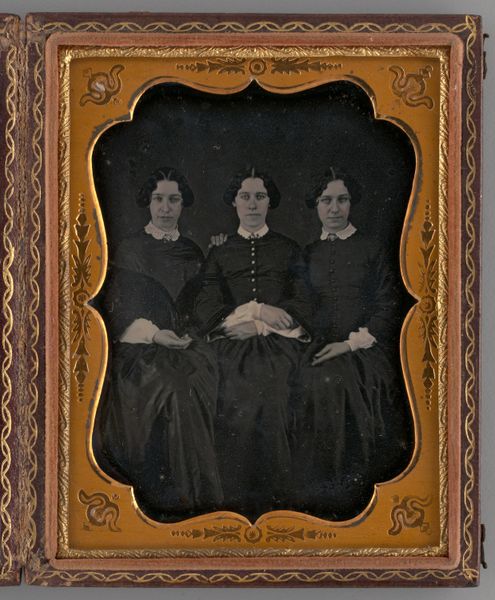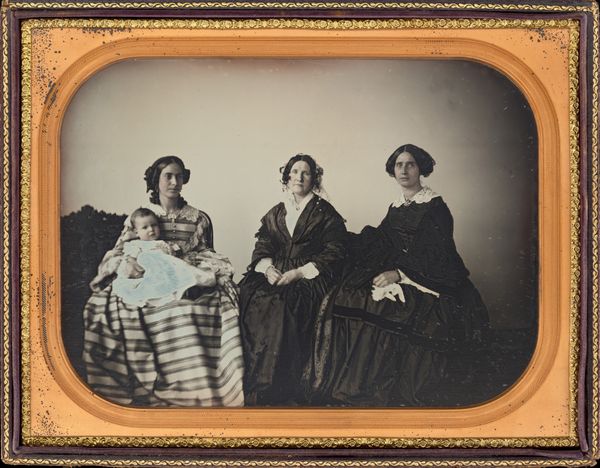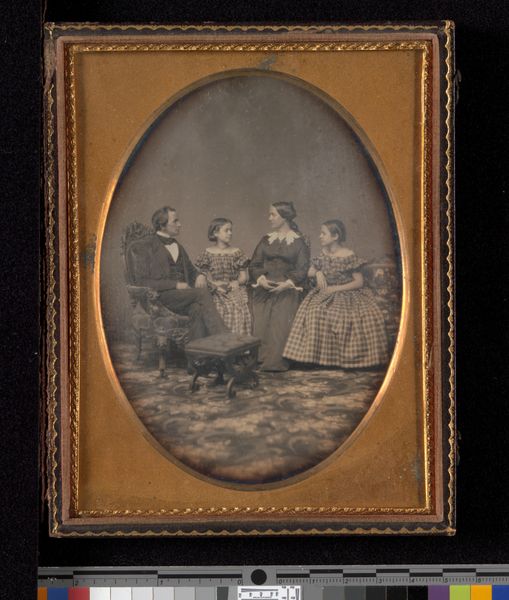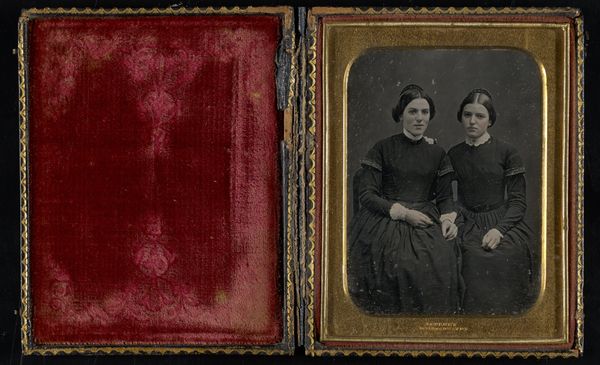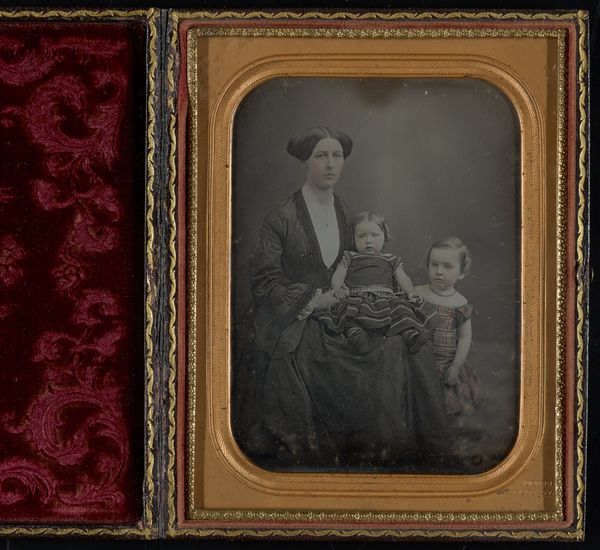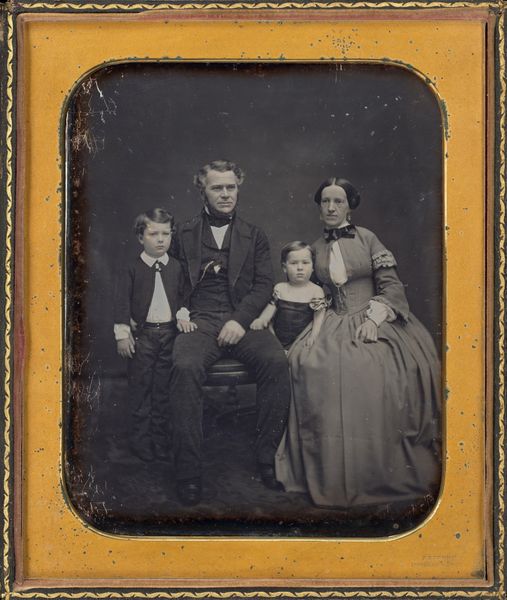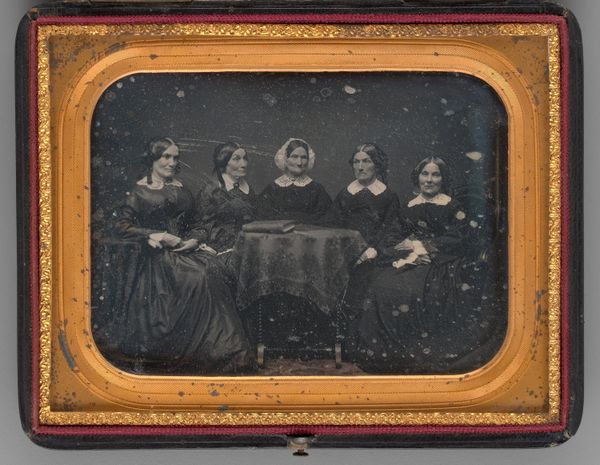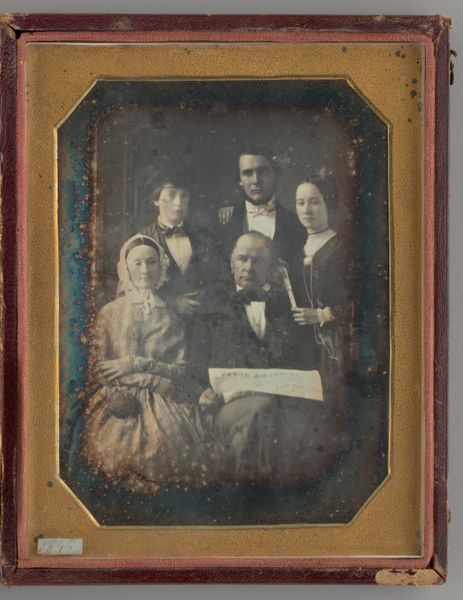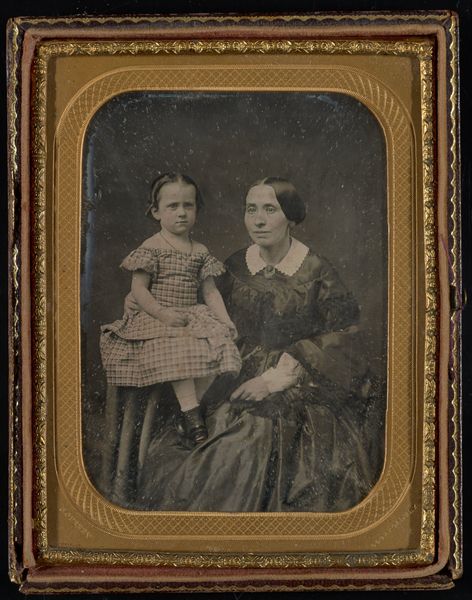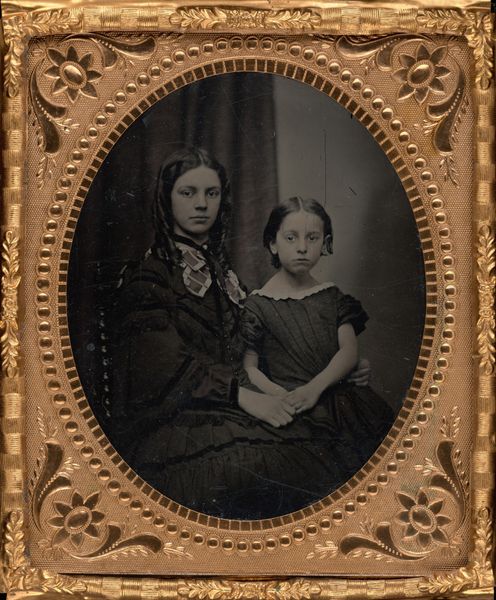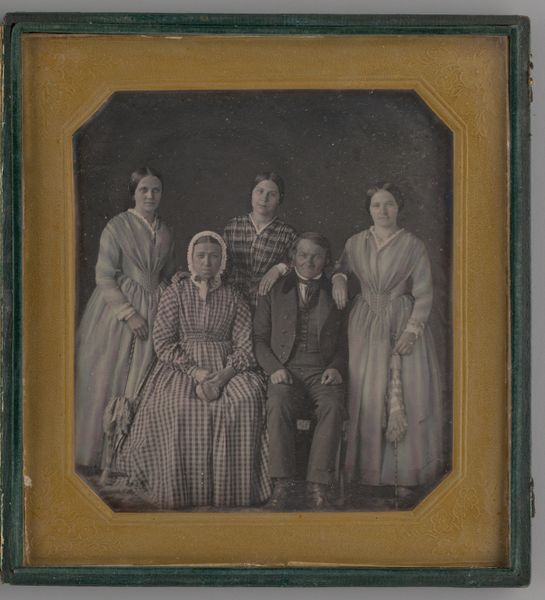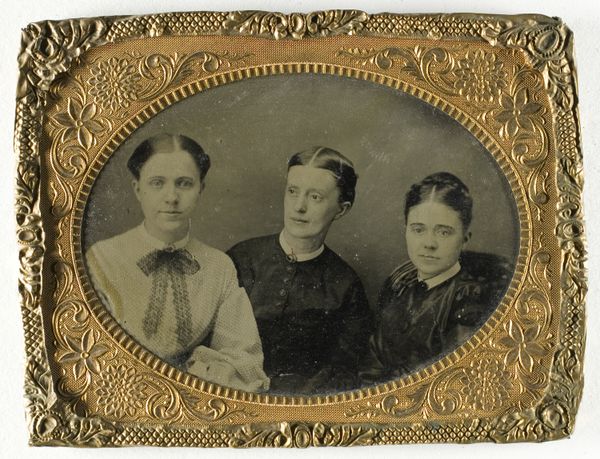
photography
#
portrait
#
16_19th-century
#
muted colour palette
#
photography
#
historical fashion
#
child
#
group-portraits
#
united-states
#
history-painting
Dimensions: 10.6 × 9.4 cm (4 1/4 × 3 1/4 in., plate); 11.9 × 21.4 × 1.2 cm (open case); 11.9 × 10.7 × 1.8 cm (case)
Copyright: Public Domain
Editor: Here we have "Untitled (Portrait of Four Women)" created in 1852 by R. Emmert Churchill, using photography. The piece features a solemn group of women, presented in a very formal manner. What historical insights can we glean from this photograph? Curator: This piece speaks volumes about the rise of photography as a tool for social documentation and the construction of identity in the mid-19th century. Before photography, portraits were largely the domain of the wealthy. Now, burgeoning middle class families could record their likenesses. Editor: It’s fascinating to think about this being a new way for families to represent themselves. Do you see any specific symbols related to class or social standing? Curator: Notice the relative austerity of their clothing, the somber expressions – quite typical, given long exposure times – and the conscious arrangement of the figures. This tells us that the portrait served as a visual record for posterity. It was meant to convey a sense of respectability and familial unity within the social conventions of the time. But also note what they chose to show, and what they deliberately omitted, providing controlled visibility. Editor: Controlled visibility, that’s an interesting point! Were there any constraints in terms of who got to be represented in photographs like these? Curator: Absolutely. Consider the demographics absent from early photography. Whose stories were excluded? Wealthier families were more able to commission these kinds of works, influencing who was visible and whose history was remembered. Think of what stories may be missing because they were not recorded or valued at the time. Editor: This has definitely given me a new perspective on how photography can be more than just a record. Thank you! Curator: My pleasure. Understanding the historical context helps us read the image in a new light.
Comments
No comments
Be the first to comment and join the conversation on the ultimate creative platform.
